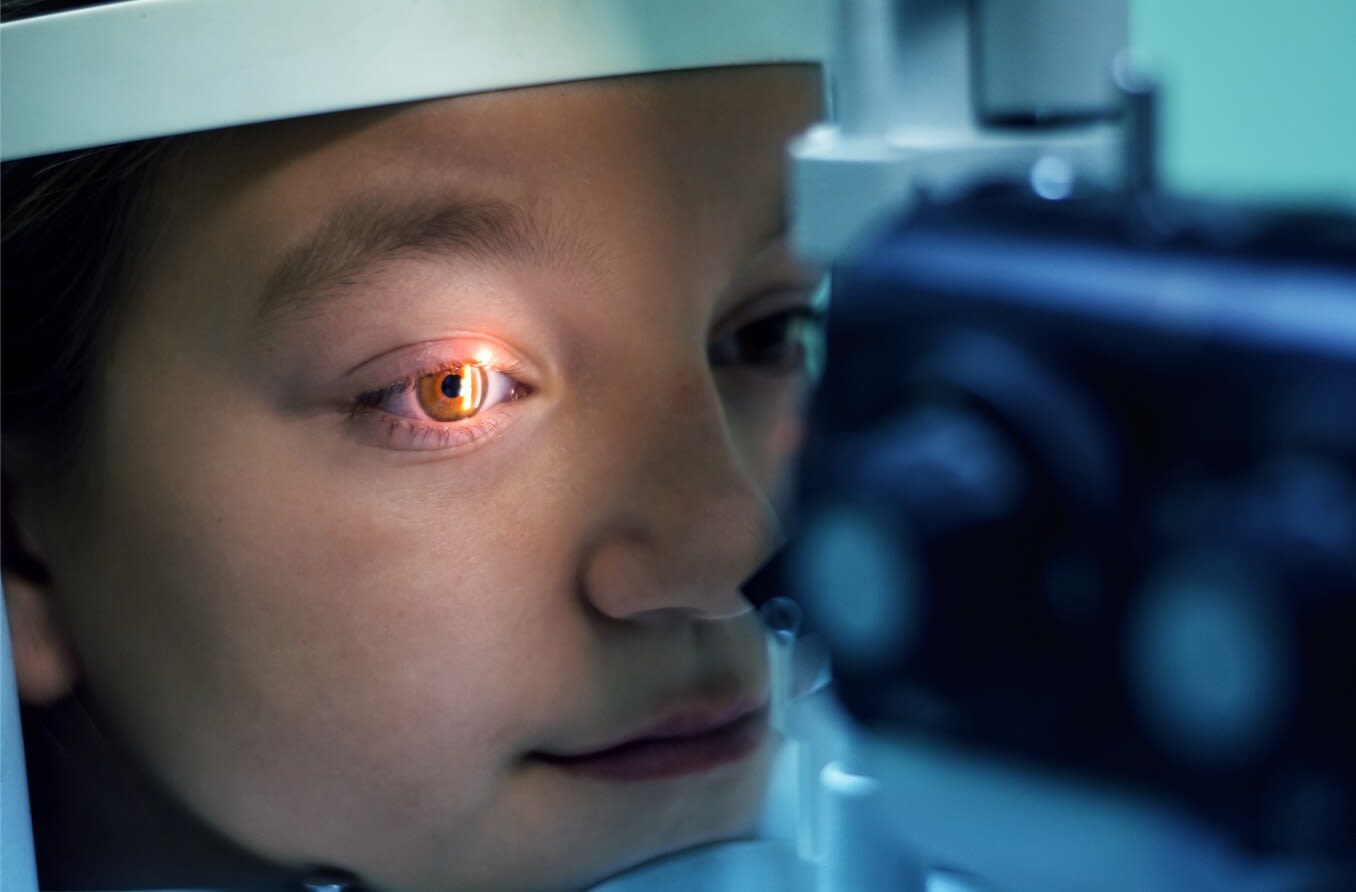Developmental glaucoma: Types and causes

What is developmental glaucoma?
Developmental glaucoma is a type of glaucoma that occurs in babies, young children and teenagers. Like the most common form of glaucoma in adults (primary open-angle glaucoma), developmental glaucoma causes damage to the optic nerve due to higher-than-normal pressure inside the eye.
Developmental glaucoma can be primary (meaning it occurs on its own) or secondary (meaning a different condition or abnormality has caused it).
Like with adult glaucoma, this diagnosis means that some degree of optic nerve damage has already occurred. However, the degree is not always severe, and in some cases, early detection and treatment can stop its progression and prevent vision loss.
Unlike adult glaucoma, there are often visible signs of the disease, making it easier to detect. However, it typically worsens much more quickly and may not respond as well to nonsurgical treatment.
Developmental glaucoma also is referred to as childhood or pediatric glaucoma. It is broken down into two categories: congenital glaucoma and juvenile glaucoma.
What is congenital glaucoma?
Glaucoma in babies and children under the age of 3 is called infantile or congenital glaucoma.
What is juvenile glaucoma?
Juvenile glaucoma is diagnosed when the onset occurs after age 3. It is commonly referred to as early-onset glaucoma when it develops in older kids or young adults.
What causes childhood glaucoma?
Nearly all types of glaucoma are caused by above-normal internal eye pressure that damages the optic nerve. It gets trickier when discussing what has caused the higher pressure.
In primary congenital and juvenile glaucoma, the increased internal eye pressure is due to prenatal defects within the eye. These defects are not caused by an underlying condition and are typically in the eye’s drainage system. If the fluid produced inside the eye (aqueous humor) can’t drain properly, fluid builds up and increases the intraocular pressure (IOP).
In cases of secondary childhood glaucoma, there is always an underlying cause. The cause may be eye abnormalities due to an underlying condition or inflammation due to autoimmune disorders, trauma or even eye surgery.
Both primary and secondary childhood glaucoma can damage more than the optic nerve. Because infants’ and children’s eyes are still very soft and malleable, the increased pressure may cause the cornea and other parts of the eye to enlarge and stretch. This can lead to corneal scarring.
Noticeably enlarged eyes, clouded corneas, excessive tearing, decreasing vision and a sensitivity to light can be symptoms of childhood glaucoma. It’s very important for parents who notice these symptoms to schedule an eye exam for their child right away.
What conditions cause secondary developmental glaucoma?
The International Glaucoma Association lists some of the conditions that may lead to secondary developmental glaucoma due to prenatal eye defects:
The autoimmune disorders most commonly associated with secondary glaucoma are:
Juvenile rheumatoid arthritis (JRA)
Marie-Strumpell ankylosing spondylitis
How common is congenital glaucoma?
The numbers of children with primary congenital glaucoma vary in different parts of the world. On average though, it is rare compared to primary open-angle glaucoma in adults. According to the Glaucoma Research Foundation, about 1 in 10,000 U.S. children is born with the condition.
Cases of juvenile or early-onset glaucoma are even rarer. Recent research published by the American Academy of Ophthalmology reports a prevalence of the condition ranging from 0.38 to 2 in 100,000 in people ages 4 to 20.
Is developmental glaucoma hereditary?
Yes and no. Some types of congenital glaucoma are passed on in autosomal genes from the parents, while other types are caused by underlying conditions (some of which can also be inherited from parents).
The American Association for Pediatric Ophthalmology and Strabismus explains that, among children with primary congenital glaucoma, about 10% of cases are inherited. It’s important to note that this doesn’t include cases of secondary congenital glaucoma that are caused by inherited underlying conditions.
Can congenital glaucoma be cured?
Unfortunately, there is no cure for glaucoma, and damage to the optic nerve that occurs prior to treatment is irreversible. Vision lost to that damage cannot be restored, and it will cause blindness if not treated. The good news is that the progression of the disease can be slowed or even stopped with early treatment and ongoing management.
If developmental glaucoma is detected and treated early enough, it’s possible for a child to have normal or near-normal vision as an adult.
Can you live a normal life with glaucoma?
Yes! With early treatment and continued monitoring of the disease, many children with glaucoma are able to thrive and enjoy life just like other kids. Managing glaucoma by keeping intraocular pressure under control is a lifelong process, but it doesn’t have to get in the way of daily life.
Parents should encourage their children to feel like active participants in controlling their glaucoma to foster confidence. For kids with low vision from glaucoma, there are plenty of wonderful vision aids and vision rehabilitation therapies that can dramatically boost independence.
CONCERNED YOUR CHILD MIGHT HAVE GLAUCOMA? Schedule an eye exam with an eye doctor near you.
Page published on Friday, July 24, 2020






